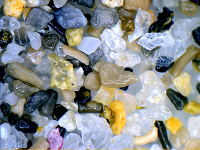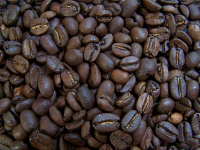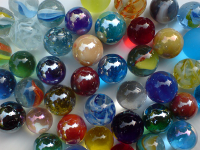Table of Contents
Research
For most of my scientific life I worked on Granular Fluids but I also have fun with bacteria and the occasional spin model. While real granular particles like sand, gravel, pills, cereals or coffee beans come in all sorts of shapes and are usually quite irregular, as a theoretician I exclusively use spherical (or disk shaped) particles. I prefer to solve problems with pen and paper (and the occasional help of Gradshteyn and Maple) but I also burn a lot of CPU time running and analysing event driven molecular dynamics simulations. Bacteria, I found, are much more complicated than hard spheres. Still I try to tackle them with simple models.
Granular Rheology
Developing constitutive equations for granular fluids is quite challenging. Many attempts have been made starting with the granular Boltzmann equation or similar approaches from the realm of rarefied gases. Unfortunately, granular flows mostly involve high densities and deformation rates far beyond the linear response regime. By exploiting slow relaxation close to the granular glass transition (see below) I could generalize the Integration Through Transients1) (ITT) approach to granular fluids. For the rich phenomenology
The Granular Glass Transition
Experiments by Durian et al.2) indicated that densely packed fluidized granular systems may be in a glassy state. I managed to generalize the so called Mode Coupling Theory3) of the glass transition (that had been developed for equilibrium fluids) to the far from equilibrium stationary state of a driven granular fluid. The result is: It works, it makes nontrivial predictions and there is a granular glass transition
Trail-Mediated Microbial Interaction
A number of micro-organisms leave sticky trails while moving around on surfaces. In turn they react to the presence of trails, effectively using them as a means to communicate4). I could show that trail-mediated self-interactions significantly alter the single particle dynamics and eventually lead to a localization transition. Collectively, we found, trail-mediated interactions to facilitate colony formation in Pseudomonas aeruginosa
Fluidized Beds
For the development of new measurement techniques for granular fluids it is useful to have efficient and faithful simulation tools. We are exploring the capabilities of a novel hybrid event-driven code5) to simulate bubbling fluidized beds by cross-validating the numerical results with experimental measurements.
- see Fluidized Beds
Rough Granular Particles
For simplicity, granular particles are most often assumed to be smooth. I.e., the slide past each other with zero friction. In reality this is certainly not the case. Frictional particles have a number of surprising features. E.g., there is no equipartition between rotational and translational degrees of freedom6) and with an extremely long calculation, we could show that the axis of rotation and the direction of flight of a rough particle are correlated.
- see Rough Spheres
Granular Mixtures
In contrast to, say, mixtures of different gases, mixtures of different granular particles do not evolve towards a state of energy equipartition. This surprising result can be explained as a competition between a drive to equilibrate the energy and different cooling rates. For highly polydisperse mixtures we analyzed the distribution of partial temperatures.



